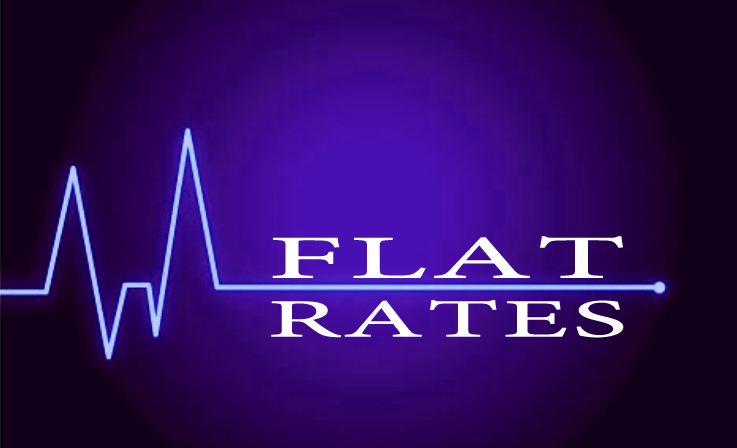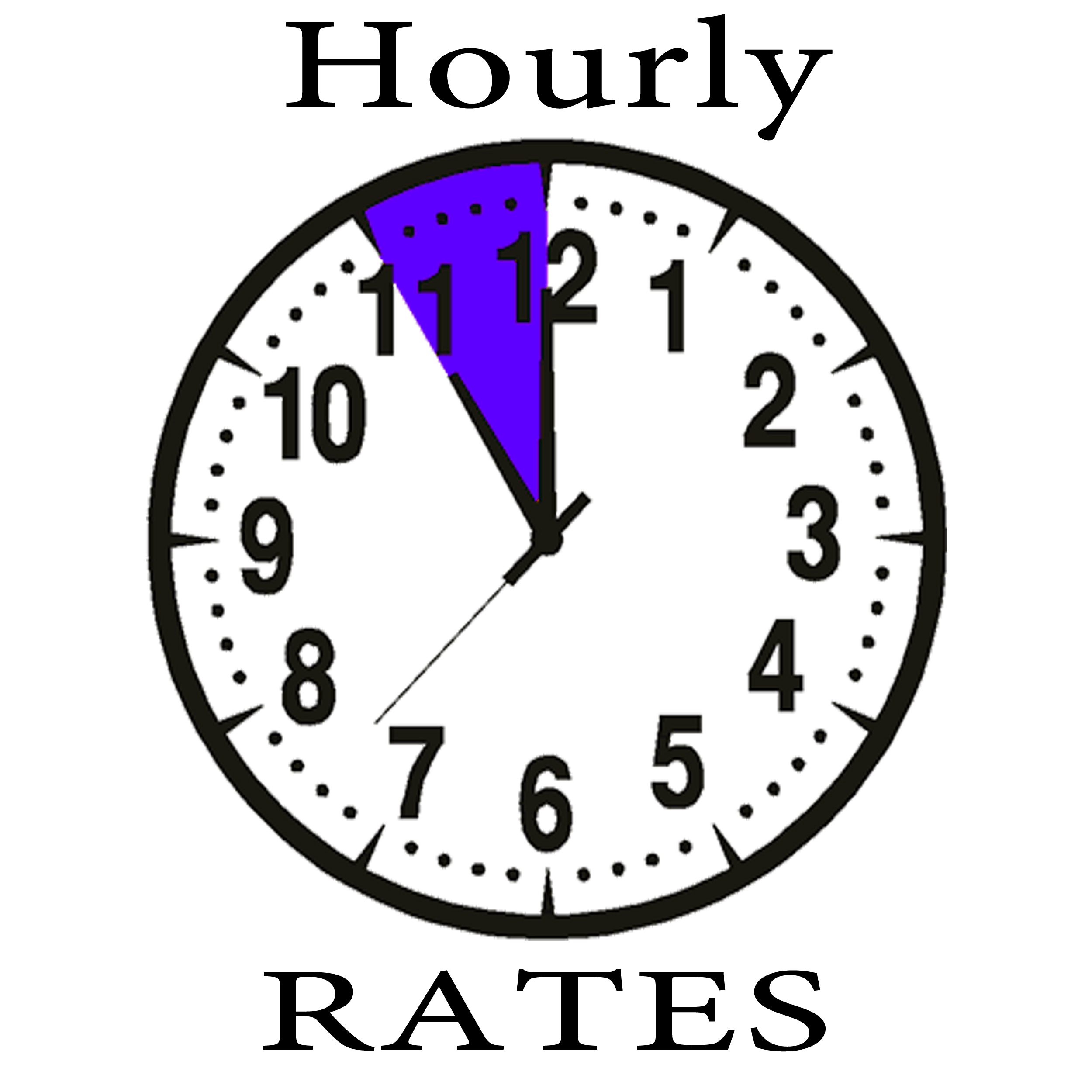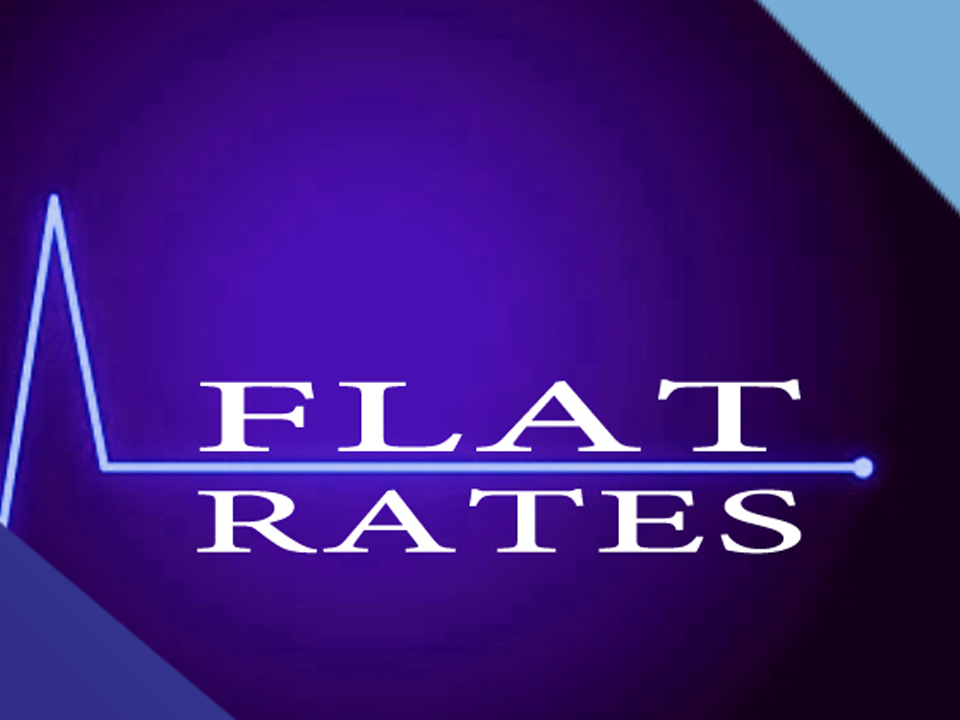Flat Rates VS Hourly Rates For Photo Retouching
If you’re like me, you may test out new methods and pricing structures on clients for a discounted price quite frequently. Recently, I tested charging flat rates and hourly rates for photo retouching with multiple clients to see which one works better under the recommendation of a few shady Internet marketers who suggested giving both rates a chance to see which one works better for me. Needless to say, I loathe flat rates for photo retouching due to the many variables that could quickly become time consuming. To understand why I dislike flat rates, continue reading.
Flat Rates
A flat rate is a pricing structure that involves charging a single fixed fee for your product or service, or at least that is how Wikipedia defines it. Flat rates are very common and are often used by retail stores, hairdressers, and the many self-employed mechanics in California. While flat rates have their uses, photo retouching is just not one of them.

Pros:
- You can ask for a 50% down payment– This is usually a good idea since it will make your client feel like they’re investing in something important (and this may be true). Also, if you don’t abscond with their money, it has the potential to develop a level of trust between you and your client.
Trust is important, until you accidentally send a non-watermarked draft to your client before they pay. – Alistair Kavalt
- The client knows the final price– Unlike hourly rates, which can vary dramatically in price, a flat rate gives the client a set price and makes them feel comfortable about paying for your service.
People generally fear the unknown, which is why hourly-rates may deter apprehensive clients who would rather know what the final price would be. – Alistair Kavalt
Cons:
- Clients are more likely to take advantage of you if you charge too little– Before Sycosure was a registered company, I would often freelance to get a feel for my future entrepreneurial existence. During this time, I found a client with narcissistic entitlement syndrome. The reason I mentioned this is because that particular client wanted a $2000 project completed for free. Of course, when I said I wouldn’t do it, the client found another web designer who just bought a $49.99 self-hosted WordPress theme and charged my lost client $300.
Cheaper prices attract cheaper clients with narcissistic entitlement syndrome – Alistair Kavalt
- Clients are more likely to not accept your offer if you charge too much– You may be told by the potential client that they, “have a friend/relative who can do what you’re doing”. While this is more than likely just a ploy to get you to lower your prices, they can still refuse to do business with you if you do not lower your prices.
If you don’t care about client quality, then an easy way to avoid losing these clients over high prices is to charge them an exorbitant amount of money in the first place and let them “haggle you down” to your normal rate. This way, your haggling client will think that they’ve outsmarted you and have received a deal while you will still receive your normal fee – Alistair Kavalt
Hourly Rates
If you’ve ever worked or even heard of a regular job (or as delusional people call them, “real jobs”), then I’m sure you know what an hourly rate is, which is similar to an hourly wage. This pricing structure involves charging a client based on how many hours you have worked on their photo or general project.

Pros:
- Clients are less likely to be picky– This is my favourite pro. For every hour your client wastes making you edit superfluous details on their photo that they never initially requested, you’re still getting paid for all of that work!
If your client wants to control the project, then let them; every hour they waste being picky is being paid for by them. – Alistair Kavalt
- Clients think the price is lower– For example: if you’re charging a client $10/h for a photo, they may think, “Well, if they can get it done in 1 hour, then I’ll only pay $10”, when in reality, that one photo may take several hours.
Charging a $10 hourly wage in lieu of a $100 flate fee is similar to the illusion of $4.99 only being 4 dollars even though it’s a penny away from being $5; it’s only ostensibly cheaper because the number is smaller. – Alistair Kavalt
- You get paid based on how much work you do– This is why I own an Internet marketing company in the first place. I prefer being paid based on how much I think my work is worth and how much I do, not based on how much the CEO of Target thinks every entry-level employ is worth (which isn’t much).
If you think your work is worth $10 an hour, then charge $10 an hour. If you think your work is worth $50 an hour, then charge $50 an hour. – Alistair Kavalt
Cons:
The Final Price May Not Be What You Expected– Let’s assume you have a project that would estimate the cost at $100 to complete at a flat rate, but you’re only going to charge your client $10/h. If you complete the final draft of the project in 5 hours, then you would only get half of what you would have received at a flat rate.
If you’re terrible at arithmetic, then estimating prices may not be a wise choice – Alistair Kavalt
- Unknown Final Price– People generally fear the unknown, which is why hourly-rates may deter apprehensive clients who would rather know what the final price would be.
A great way to put dubious clients at ease is by giving them an honest estimate of the final price, but only if they ask or if you think they’re going to refuse the deal – Alistair Kavalt
Which Is Better?
In all honesty, I’ve found hourly rates to be superior to the flat rate model. I would only ever suggest using the flat rate model if you’ve worked with enough clients to know how much the final price would be or if you believe flat rate to be more lucrative.
- Slow Website? Consider Robots As Being The Culprit - June 24, 2025
- My Experience Accepting Crypto Payments For The First Time - April 25, 2025
- Are Forums Dying? A Look Into Forums As A Whole - April 22, 2025


Are there any page tools for this?
How can i thank you for this content? , it’s great this content is free!
Ylvis approves of this article!
Great site, Thanks for sharing!!
These are in fact fantastic ideas in on the topic of rates.
You have touched some pleasant things here. Any way keep
up wrinting.